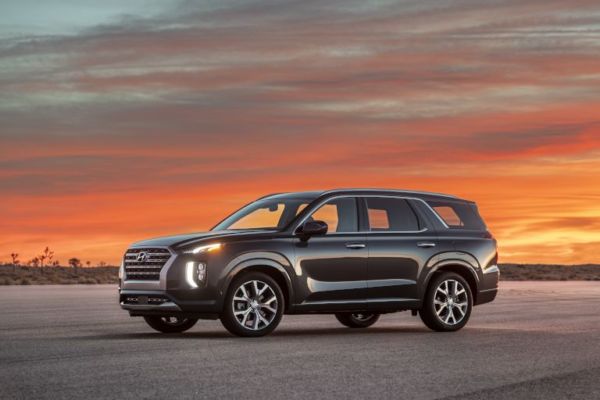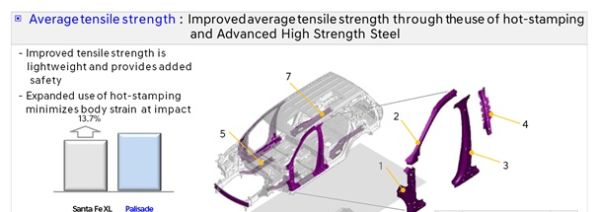Hyundai’s 2020 Palisade Strategically Uses Advanced High-Strength Steel for Safety and Suspension
The 2020 Hyundai Palisade is a stellar example of the use of steel for stability, strength and safety.
Steel for Structure
When they launched the Palisade, the Hyundai Motor Company told the press, “Palisade has a very rigid structure, with strategic use of Advanced High-Strength Steel (AHSS) in key suspension and crash areas to provide increased tensile-strength.”
Hyundai wrote, “Use of Advanced High Strength Steel has several benefits: lighter overall vehicle weight and greater vehicle strength and rigidity without the excessive costs of more exotic lightweight materials.”
Steel for Stability
The Palisade’s firm build gives it a solid and quiet drive, according to Automobile Magazine’s Lawrence Ulrich, who wrote, “Appropriately for the brand’s new flagship, the Palisade feels solid, quiet, and upscale throughout. Several hoop-like structures buttress the cowl, liftgate, and doors, for a major jump in torsional stiffness versus the Santa Fe. That safety cage is designed for side and roof protection, as well as optimized for critical small-overlap front crash testing, and Hyundai expects top scores from both NHTSA and the IIHS. Hyundai says the Palisade is not only formed from 59 percent high-strength steel—versus just 25 percent for the new Explorer—but uses 19 hot-stamped components that reduce weight by requiring less metal overall. Structure optimized, Hyundai then looked to suppress sound like an obsessive librarian. Installed- and-injected foam fills the roof pillars and floor structure. A special floor stamping integrates an anti-vibration pad.”
2020 Hyundai Pallisade from worldautosteel on Vimeo.
Steel for Safety
In its article about how the Palisade earned a Top Safety Pick designation from the Insurance Institute of Highway Safety (IIHS), Car and Driver’s Drew Dorian wrote, “It should come as no surprise that the Palisade–a new SUV on which we’ve heaped praise since its debut–would do quite well in crash tests. After all, it was designed and engineered in the modern age of high-strength steel, crumple zones, and driver-assistance features.”
According to Hyundai, Palisade is expected to achieve TSP+ from the IIHS and a 5-star NHTSA rating. Robust underbody and side structures are designed to increase energy absorption and cabin intrusion in a severe collision, especially in the small overlap test. Further, its underbody uses multiple load paths to better disperse potential crash energy in the event of a collision.
Steel for Lightweighting without Sacrificing Handling
AHSS also provided the manufacturing engineers of the Palisade with a lightweighting advantage over other materials. According to TractionLife, “Hyundai uses a lot of high-strength steel in this vehicle, which saves on weight while giving the chassis greater stiffness. For the driver, the elimination of body flex makes it feel very sure-footed during maneuvers.”
Learn more about the 2020 Hyundai Palisade here: Official Hyundai Website


